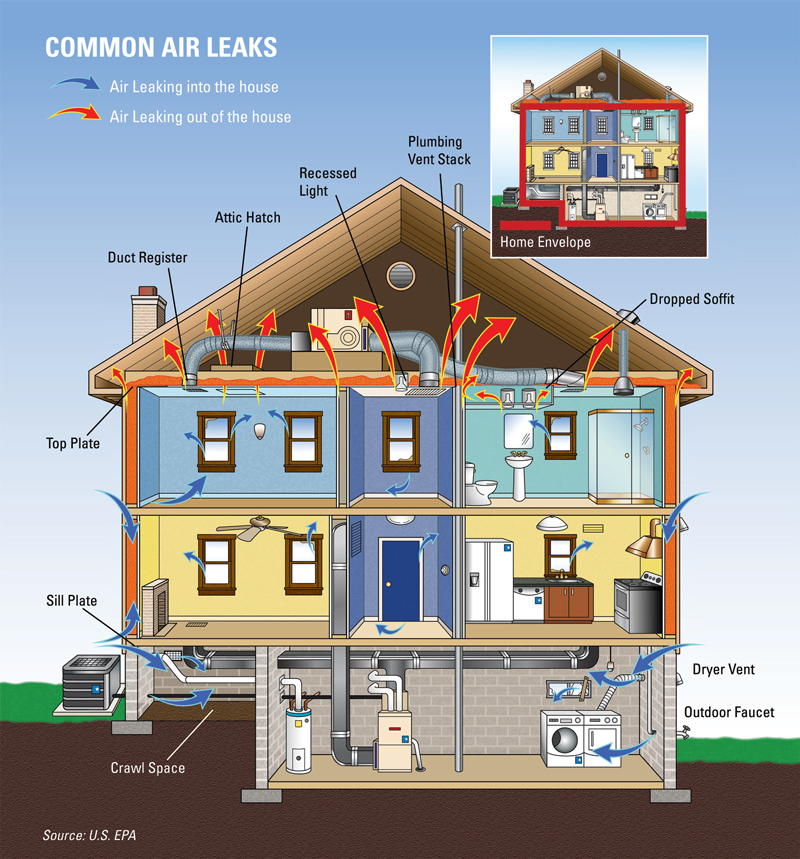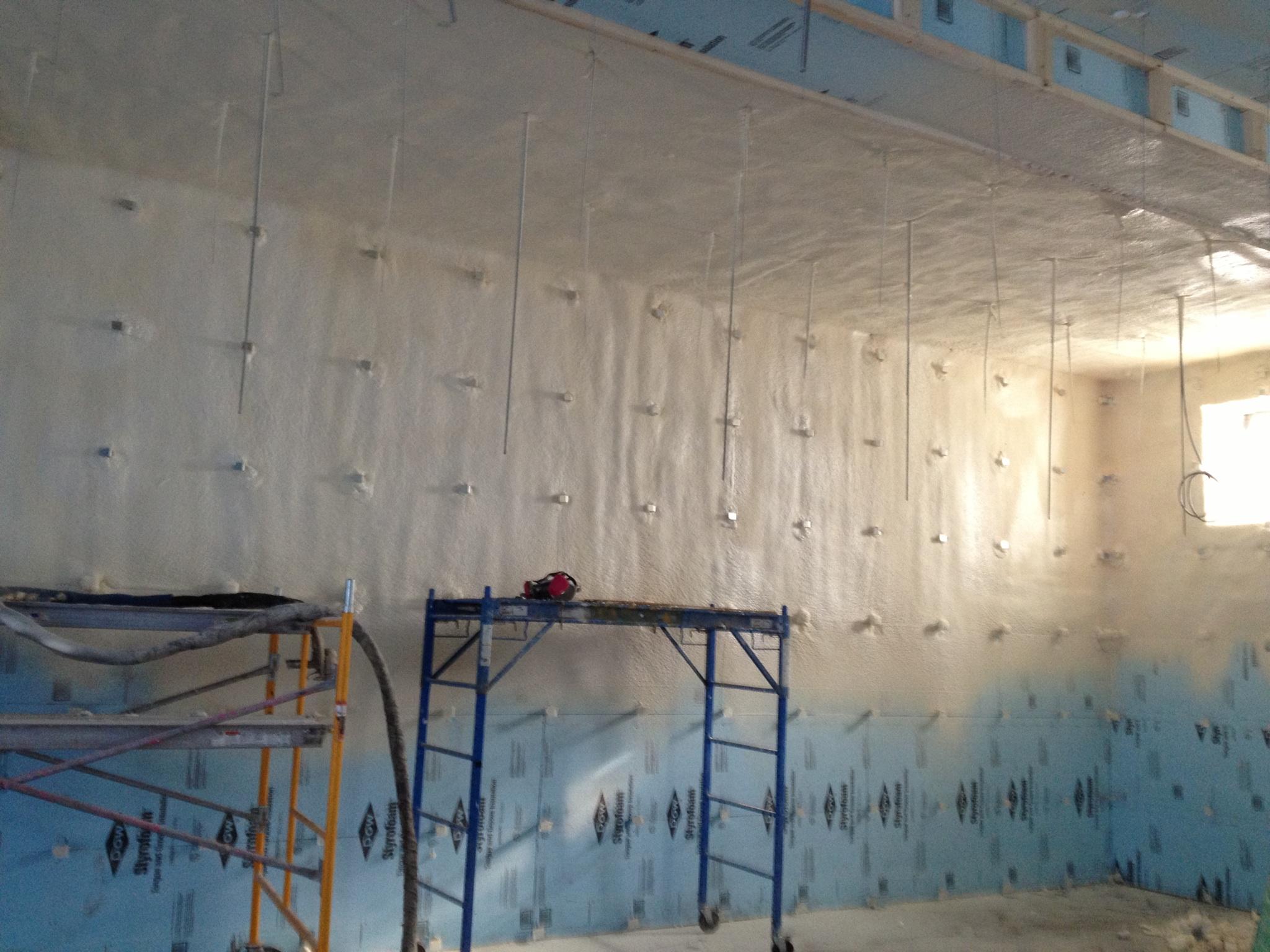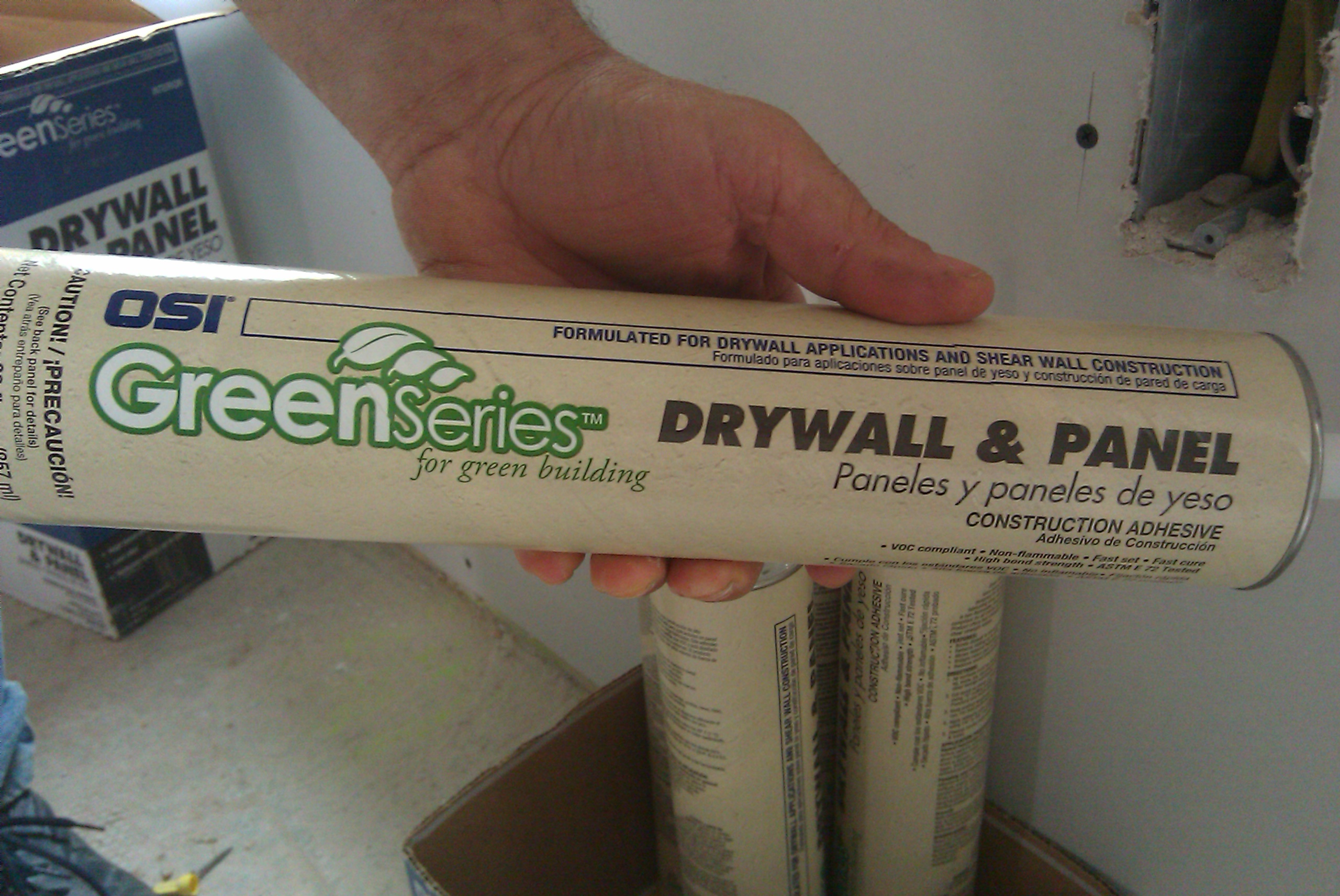Air sealing is the first line of defense against wasting energy in your home and protecting your indoor air quality. Air sealing is the practice of filling all those gaps, cracks, and holes in your thermal envelope. This tightens the home’s air pressure giving you a solid thermal envelope.
Air sealing is the most effective way to reduce energy consumption in your home. It will also help protect indoor air quality in your home and the durability of your building materials. In a typical home, air leaks through walls, crawl spaces, attic, around windows, and doors. This air is not filtered and leads to dust particles and potentially dangerous chemicals in the indoor air. Making your home air tight also stops moisture moving through building materials. Bulk moisture migrating through building materials could lead to rot or mold growth.
The most common materials used to air seal your home is a latex or silicone caulk. Other materials that can be used include expanding foams, weatherstripping, or dense insulation materials like cellulose. Done right with a holistic approach to building science, these strategies help create a high performance building solution.






